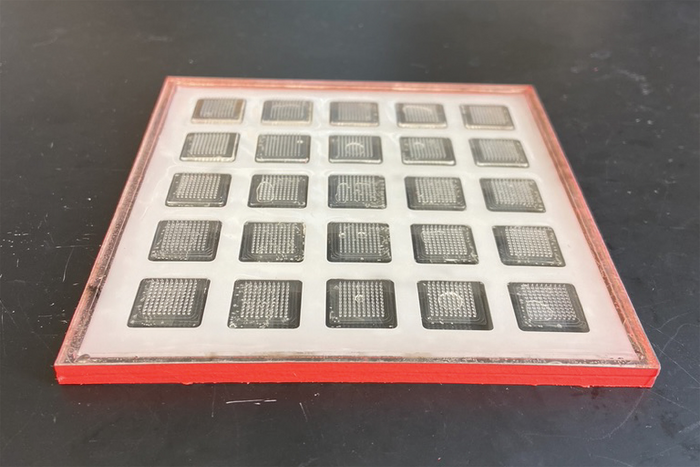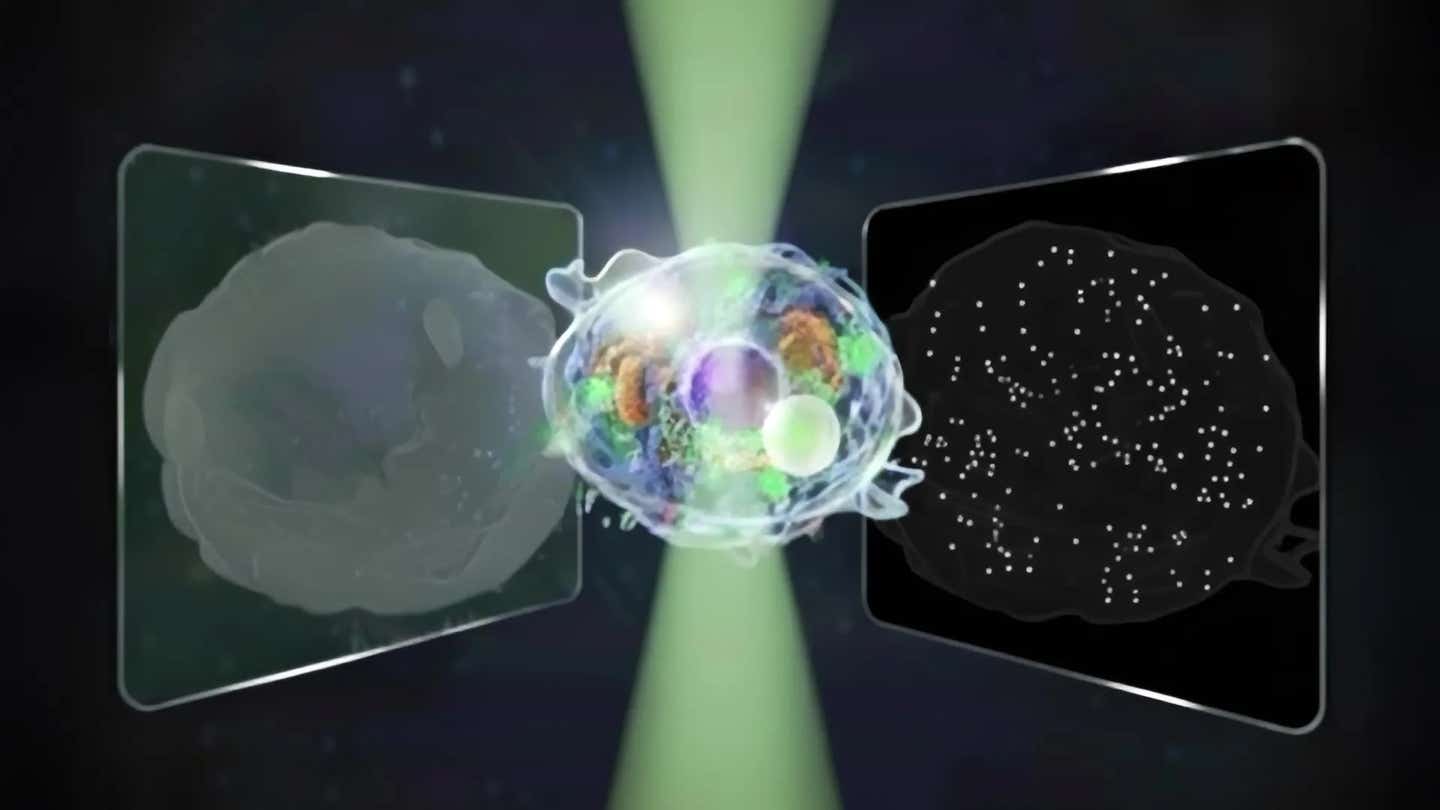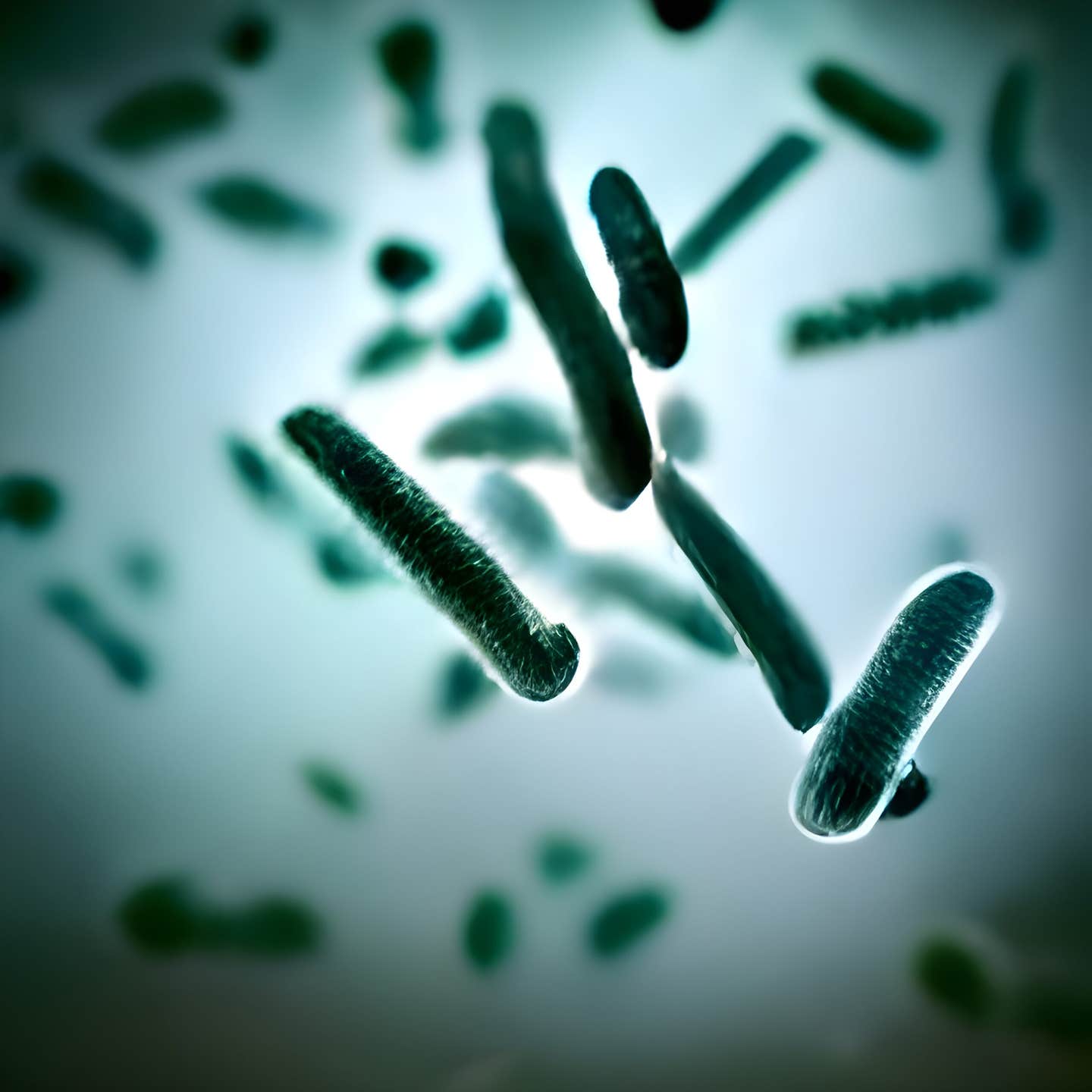First-ever mobile vaccine printer can produce hundreds of vaccine doses a day
Distribution of vaccines has proven to be a significant challenge, especially in remote areas without the necessary infrastructure.

[Apr. 29, 2023: JD Shavit, The Brighter Side of News]
Inside the printer, a robotic arm injects ink into microneedle molds, and a vacuum chamber below the mold sucks the ink down to the bottom. Pictured is an example of the mold. (CREDIT: MIT)
The COVID-19 pandemic has highlighted the importance of vaccination in controlling the spread of disease. However, the distribution of vaccines has proven to be a significant challenge, especially in remote areas without the necessary infrastructure.
Many vaccines require cold storage, making it difficult to transport them to such areas. To overcome this issue, MIT researchers have developed a mobile vaccine printer that can produce hundreds of vaccine doses per day. The printer is small enough to fit on a tabletop and can be deployed anywhere vaccines are needed.
The researchers, led by Ana Jaklenec, a research scientist at MIT’s Koch Institute for Integrative Cancer Research, and Robert Langer, the David H. Koch Institute Professor at MIT and a member of the Koch Institute, published their findings in a study appearing in Nature Biotechnology.
The study showed that the printer could produce thermostable Covid-19 RNA vaccines that could induce a comparable immune response to that generated by injected RNA vaccines in mice.
Related News
Traditional vaccines, including mRNA vaccines, require refrigeration while stored, making it challenging to stockpile or transport them to locations without the necessary infrastructure. Furthermore, administering these vaccines requires syringes, needles, and trained healthcare professionals.
To overcome this obstacle, the researchers set out to develop a device that could produce vaccines on demand. Their original motivation was to build a device that could quickly produce and deploy vaccines during outbreaks of diseases such as Ebola. Instead of producing traditional injectable vaccines, the researchers decided to work with a novel type of vaccine delivery based on patches about the size of a thumbnail, which contain hundreds of microneedles.
When the patch is applied to the skin, the tips of the needles dissolve under the skin, releasing the vaccine. The ink used to print the vaccine-containing microneedles includes RNA vaccine molecules encapsulated in lipid nanoparticles, which help them remain stable for long periods. The ink also contains polymers that can be molded into the right shape and remain stable for weeks or months, even when stored at room temperature or higher.
The printer produces patches with hundreds of microneedles containing vaccine. The patch can be attached to the skin, allowing the vaccine to dissolve without the need for a traditional injection. (CREDIT: MIT)
The printer includes a robotic arm that injects ink into microneedle molds, and a vacuum chamber below the mold sucks the ink down to the bottom, ensuring that the ink reaches the tips of the needles. The molds take a day or two to dry, and the current prototype can produce 100 patches in 48 hours. The researchers anticipate that future versions could have higher capacity.
To test the long-term stability of the vaccines, the researchers created an ink containing RNA that encodes luciferase, a fluorescent protein. They applied the microneedle patches to mice after being stored at either 4 degrees Celsius or 25 degrees Celsius (room temperature) for up to six months.
They also stored one batch of the particles at 37 degrees Celsius for one month. The patches induced a strong fluorescent response when applied to mice under all storage conditions. In contrast, the fluorescent response produced by a traditional intramuscular injection of the fluorescent-protein-encoding RNA declined with longer storage times at room temperature.
Modular inks containing mRNA, lipids and polymer can be customized for microneedle vaccine printing. The MVP can be distributed to remote areas to provide local manufacturing capability of thermostable MNPs. (CREDIT: Nature Biotechnology)
The researchers also tested their Covid-19 microneedle vaccine. They vaccinated mice with two doses of the vaccine, four weeks apart, then measured their antibody response to the virus. Mice vaccinated with the microneedle patch had a similar response to mice vaccinated with a traditional, injected RNA vaccine. The researchers also observed the same strong antibody response when they vaccinated mice with microneedle patches that had been stored at room temperature for up to three months.
Joseph DeSimone, a professor of translational medicine and chemical engineering at Stanford University, who was not involved in the research, said, “This work is particularly exciting as it realizes the ability to produce vaccines on demand… mobile vaccine printers can be rapidly deployed to any location in the world, even in remote or underdeveloped areas, to produce vaccines in real-time and respond quickly to outbreaks and pandemics.”
Images of MNPs made from various volumes of 20% w/w PVP:PVA solution, which minimize vaccine waste with an ultrathin backing. The 20% w/w PVP:PVA solutions were colored with crystal violet. (CREDIT: Nature Biotechnology)
The team of researchers behind the mobile vaccine printer is now working to further improve the technology and make it more accessible to those who need it the most. They are also exploring ways to scale up production so that it can be used on a larger scale.
In addition to its potential for global health, the mobile vaccine printer also has the potential to revolutionize the way vaccines are developed and manufactured. Traditional vaccine production methods can take months or even years, but the mobile printer can produce a vaccine in a matter of minutes.
This technology could also help to address the issue of vaccine hesitancy by allowing for more tailored vaccines to be created quickly and efficiently. Rather than relying on a one-size-fits-all approach, vaccines could be customized based on the specific needs of different populations, which could help to increase confidence in vaccination.
Overall, the mobile vaccine printer represents a major breakthrough in vaccine technology and has the potential to make a significant impact on global health.
Other authors of the paper are Maria Kanelli, Lisa Tostanoski, Joe Collins, Apurva Pardeshi, Jooli Han, Dhruv Varshney, Behnaz Eshaghi, Johnny Garcia, Timothy Forster, Gary Li, Nandita Menon, Sydney Pyon, Linzixuan Zhang, Catherine Jacob-Dolan, Olivia Powers, Kevin Hall, Shahad Alsaiari, Morris Wolf, Mark Tibbitt, Robert Farra, and Dan Barouch.
For more science and technology stories check out our New Discoveries section at The Brighter Side of News.
Note: Materials provided above by The Brighter Side of News. Content may be edited for style and length.
Like these kind of feel good stories? Get the Brighter Side of News' newsletter.



